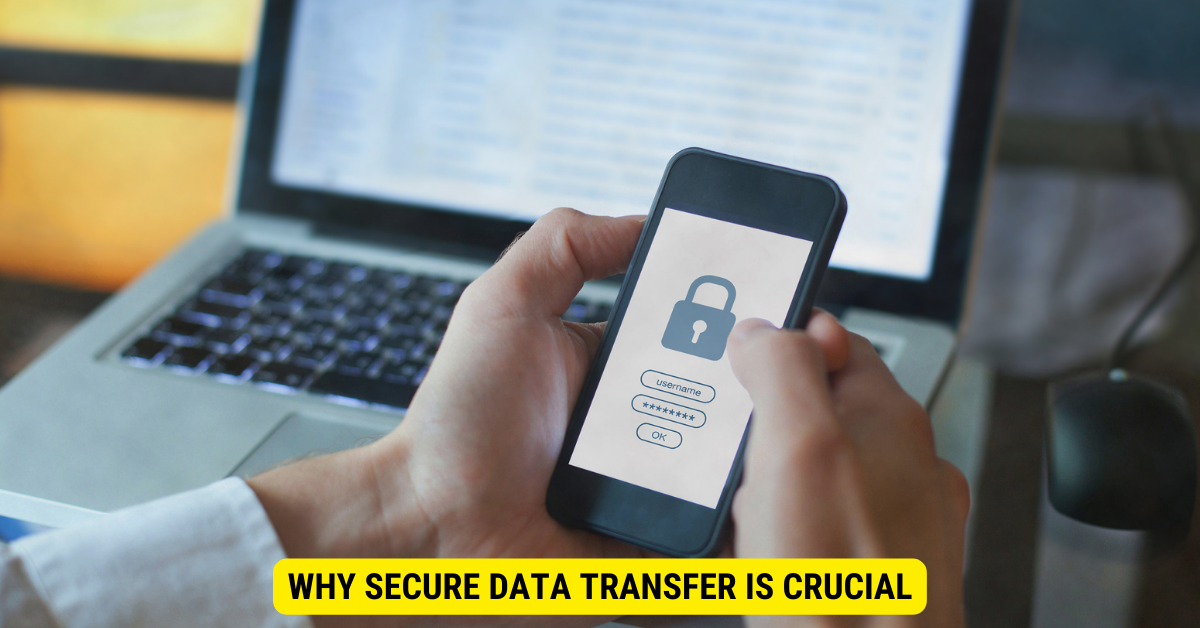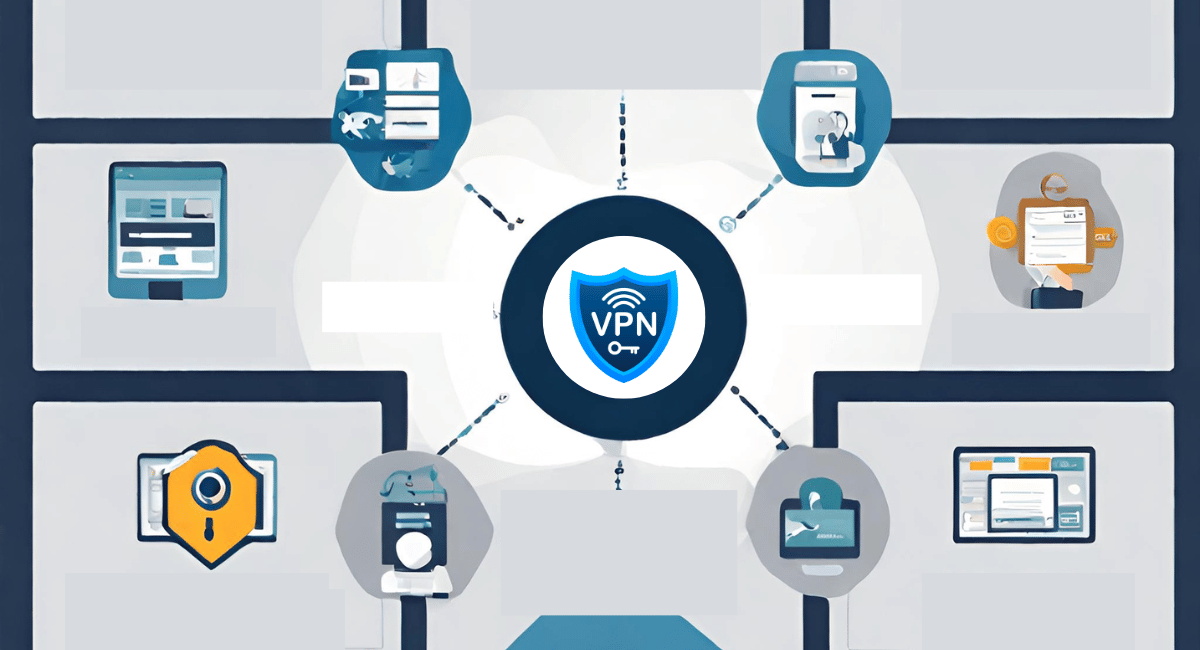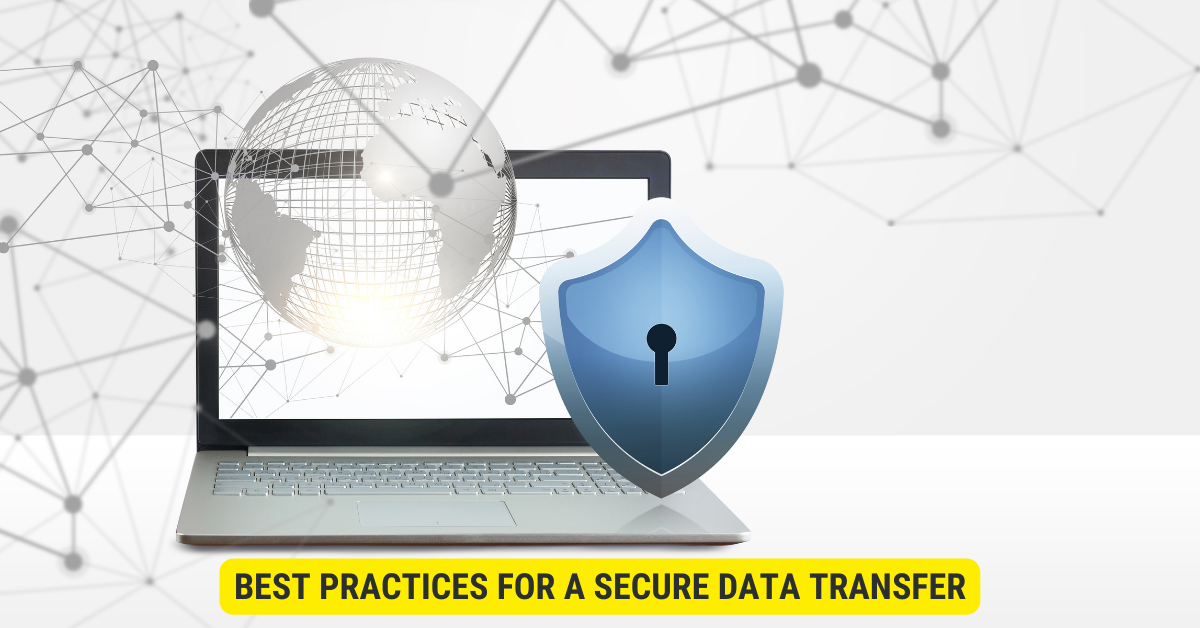To copy secured data onto new devices, you should:
-
End-to-End Encryption (E2EE) Tools
-
Secure Data Transfer Platforms
-
Physical Transfers with Encrypted Drives
-
Virtual Private Network (VPN)
-
In today’s digital age, where data forms the backbone of many operations, the secure transfer of data has never been more vital. From corporations to individual users, ensuring data integrity and security during transfer, especially to new devices, is paramount. I will equip my readers with a comprehensive understanding of the techniques, best practices, and modern solutions available for secure data migration.
Why Secure Data Transfer is Crucial

The significance of secured data transfer is multifaceted:
- Maintaining Data Integrity: Any tampering or alteration can render data useless or misleading.
- Preventing Unauthorized Access: Unauthorized data access can lead to misuse, resulting in financial, reputational, and legal repercussions.
- Ensuring Business Continuity: For businesses, data loss or tampering can disrupt operations and lead to significant downtime.
How to Copy Secured Data onto Their New Devices: Detailed Methods and Steps
-
End-to-End Encryption (E2EE) Method
E2EE is one of the most robust ways to ensure data privacy during transfer, as the data is encrypted from the source and only decrypted at the destination.
Steps:
- Select an E2EE Tool: Tools like Signal or WhatsApp are renowned for their E2EE capabilities.
- Initiate Data Transfer: Start the transfer, either through messaging (for smaller data) or using specialized E2EE transfer tools for larger datasets.
- Decryption at Destination: The receiver will automatically decrypt the data upon receipt using the E2EE tool.
-
Secure Data Transfer Platforms
Platforms like SFTP (Secure File Transfer Protocol) or MFT (Managed File Transfer) are designed for transferring large datasets securely.
Steps:
- Choose a Platform: Depending on your needs, select either SFTP or MFT.
- Input Credentials: Enter the required usernames, passwords, or keys for authentication.
- Start the Transfer: Drag and drop the files or directories you wish to transfer.
- Monitor the Transfer: Use the platform’s dashboard to track the transfer progress and ensure no breaches occur.
-
Physical Transfers using Encrypted Drives
For those who prefer offline methods or have exceptionally large or sensitive datasets, encrypted drives are ideal.
Steps:
- Select a High-Quality Encrypted Drive: Brands like SanDisk or Kingston are renowned for their encrypted USB drives.
- Load Data onto the Drive: Connect the drive to your computer and transfer the data.
- Set a Strong Password: Ensure you set a robust password, which will be required to access the data later.
- Hand-Deliver or Securely Ship the Drive: Depending on the situation, either hand-deliver the drive to the recipient or use a trusted courier service.
-
Virtual Private Network (VPN) Method

VPNs provide a secure encrypted tunnel through which data can be transferred safely.
Steps:
- Select a Reputable VPN Service: Options include ExpressVPN, NordVPN, or CyberGhost.
- Install the VPN Client: Download and install the VPN software on both the sending and receiving devices.
- Connect to a Secure Server: Choose a server, preferably in a location with robust data protection laws.
- Initiate the Data Transfer: With the VPN active, use your preferred method (like cloud storage or direct transfer) to send the data.
-
Cloud Storage with Enhanced Security Features
Many cloud storage solutions come with advanced security features, making them suitable for transferring sensitive data.
Steps:
- Choose a Secure Cloud Storage Provider: Providers like Tresorit or pCloud offer end-to-end encryption.
- Upload Data to the Cloud: Once you’ve created an account, upload your data to your cloud space.
- Share the Data: Use the cloud platform’s sharing features to send the data link to the recipient.
- Recipient Downloads the Data: The recipient can then access and download the data securely from the shared link.
Best Practices for a Secure Data Transfer

- Backup Data: Always maintain a recent backup of your data before any transfer.
- Software Updates: Regularly update all software to shield against known vulnerabilities.
- Multi-Factor Authentication: Implementing MFA provides heightened security.
- Minimize Data Transfer: Transfer only essential data to reduce exposure.
- Constant Monitoring: Real-time monitoring tools can immediately identify and rectify any security breaches.
Innovations in Secure Data Transfer
The future looks promising with developments like:
- Quantum Encryption: This method uses quantum mechanics to secure data, making it virtually unhackable.
- AI-Powered Security: Artificial Intelligence can predict and counteract cyber threats in real time.
Key Takeaways
- Secure data transfer is non-negotiable in today’s digital age.
- Multiple methods, from E2EE to physical encrypted drives, can be employed based on specific needs.
- Regular software updates and real-time monitoring are essential for maintaining data security.
- The future of data security looks robust with innovations like quantum encryption.
FAQs
What is the safest method for data transfer?
While all methods have their merits, E2EE is currently one of the safest due to its robust encryption standards.
Are offline transfer methods like encrypted drives foolproof?
While they eliminate online hacking threats, they are susceptible to physical theft. They should be safeguarded accordingly.
How frequently should I update my software for secure transfers?
It’s advisable to update software as soon as patches or updates are released. Regular checks for updates are recommended.
Do VPNs guarantee safe data transfer?
VPNs significantly enhance data security. However, they should be paired with other methods like E2EE for comprehensive security.
Conclusion
In our interconnected world, the importance of secure data transfer cannot be overstated. From individual users to multinational corporations, everyone stands to benefit from employing best practices and advanced techniques in secure data migration. As technology continues to evolve, so too will the methods by which we protect and transfer our most valuable digital assets.
